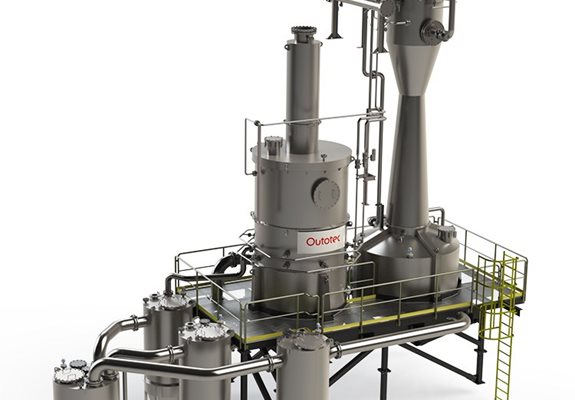- All
- Product Name
- Product Keyword
- Product Model
- Product Summary
- Product Description
- Multi Field Search
Views: 7 Author: Xicheng EP LTD Publish Time: 2024-02-23 Origin: Xicheng EP LTD
A wet scrubber is a device that uses a liquid medium (usually water) to clean gas or solid particles. The main purpose of a wet scrubber is to remove pollutants from solid particles or gases through processes such as dissolution, flushing and adsorption in liquids. There are several common types of wet scrubbers, and the differences between them are mainly reflected in their working principles and applicable scenarios.
Spray Towers:
Working principle: The pollutant gas is sprayed into the liquid through the nozzle, and the pollutants are adsorbed or dissolved by the liquid.
Application: Suitable for large particle contaminants such as particulate matter.

Packed Towers:
Working principle: The polluted gas passes through the filler, such as plastic filler or metal filler, and the liquid forms a film on the surface of the filler, and the pollutants are adsorbed or dissolved.
Application: Suitable for fine particles and soluble chemicals in gases.
Cyclone Wet Scrubbers (Venturi Scrubbers):
Working principle: The polluted gas passes through the nozzle, forming a cyclone, and the liquid is sprayed into the air flow, and the pollutants are moistened and removed.
Application: Suitable for gases with high temperature, high humidity and small particles.

Wet Electrostatic Precipitators:
Working principle: The electric field is used to guide the charged particles to the liquid surface, and the pollutants are adsorbed.
Application: Suitable for efficient dust removal with high requirements on particulate matter.

Wet Scrubbing Filter:
Working principle: The polluted gas passes through the moist filter media, and the particles are captured and adsorbed in the liquid.
Application: Suitable for high-efficiency filtration of fine particles.
These wet scrubber types play a key role in different industrial applications and the selection of the appropriate type depends on factors such as the nature of the contaminants, gas flow rate, temperature, etc.
Spray Towers:
Application: Mainly used to deal with large particles, such as particle removal, flue gas cooling, etc. Commonly found in the petrochemical, power and metallurgical industries.
Packed Towers:
Application: Suitable for fine particles and soluble contaminants in gases. Commonly used in chemical industry, metallurgy, electric power and waste gas treatment fields.
Cyclone Wet Scrubbers (Venturi Scrubbers):
Application: Suitable for gases with high temperature, high humidity and small particles. Commonly used in petrochemical, metallurgy, glass manufacturing and other industries.
Wet Electrostatic Precipitators:
Application: For efficient dust removal, suitable for handling fine particles and soluble contaminants. Commonly found in steel, chemical, electric power and other industries.
Wet Scrubbing Filter:
Application: Suitable for high-efficiency filtration of fine particles. Commonly found in semiconductor manufacturing, pharmaceuticals, electronics industries and other fields with high air quality requirements.

The treatment efficiency of a wet scrubber depends on several factors, including the type of scrubber, design parameters, operating conditions, and the nature of the contaminants in the gas to be treated. Here are some of the key factors that influence wet scrubber processing efficiency:
Scrubber types: Different types of wet scrubbers exhibit varying efficiencies in treating different types of contaminants. For example, cyclonic wet scrubbers are suitable for particle removal, while wet electrostatic precipitators are effective at handling fine particles and gases.
Liquid Characteristics: The nature of the wash liquid used (e.g. water, solution, chemical solvent, etc.) as well as the chemistry and pH of the liquid will affect treatment efficiency. Appropriate liquid selection can enhance adsorption or solubilization of specific contaminants.
Gas Flow: Treatment efficiency generally decreases as gas flow increases. Under high flow conditions, the time that pollutants are in contact with the liquid per unit time is reduced, which may lead to a decrease in efficiency.
Temperature and Humidity: Temperature and humidity have a significant impact on the performance of a wet scrubber. Higher temperatures and humidity generally help increase the solubility of contaminants and the liquid's ability to absorb gases.
Nature of pollutants: Wet scrubbers have different adaptability to pollutants of different natures. Some scrubbers may be better suited for handling particulate matter, while others are better suited for handling soluble contaminants in the gas.
Scrubber design: Design parameters such as fill type, nozzle design, electric field settings, etc., directly affect the performance of the wet scrubber. Optimizing the design can improve processing efficiency.
| | N0.34 Zhenxing Road (Shengtaian Heavy Industrial Park B), Loucun, Guangming New Dist, Shenzhen, Guangdong, China |
| | +86 18028775826 |
| | Leyte@china-xicheng.com |